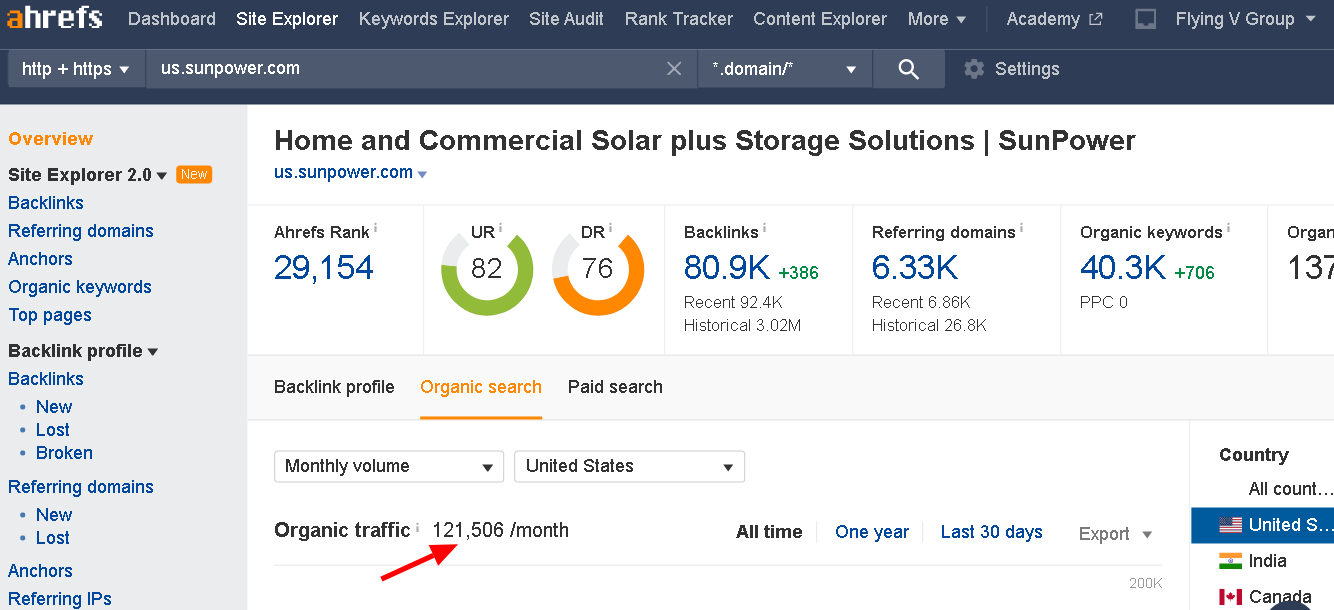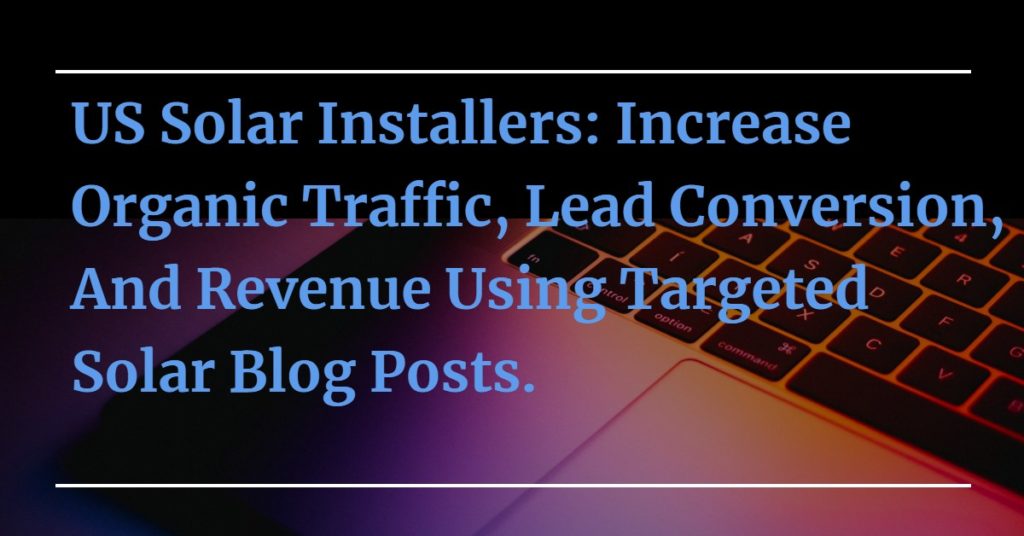
For Residential Solar Installers
In The Us (And Beyond)
Looking To Scale Their Marketing,
Blogs, And SEO Results!
Does a Google search spit out the name of your solar installation business and the fantastic services you offer?
If not, then you’re missing a big slice of the 25 billion dollars American solar market.
Updating your solar blog with relevant, SEO solar content is a sure way of earning organic, high converting traffic to your company.
A solar blog will help you reach the 260,000+ Americans who search the term “solar panels” on Google every month.
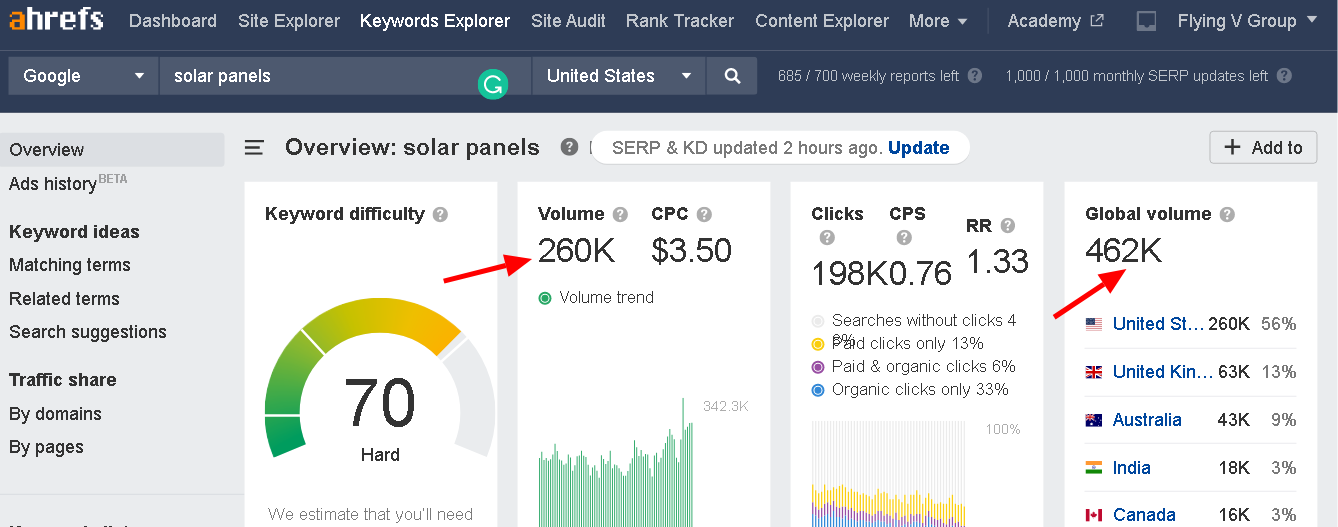
Blogging is also a proven marketing strategy that will improve your SEO campaign, strengthen your credibility and increase your brand awareness massively.
To fully reap the benefits of solar digital marketing, maintain a regular blog full of valuable information that comprehensively addresses your clients’ pain points.
This in-depth guide will explore solar content marketing and its enormous value to your solar installation business.
(1) Solar industry overview
Solar content marketing is the new buzzword around the solar industry, and it’s no wonder since the internet runs things.
To fully interact with your clients, your solar business needs high online visibility. A sure way of doing this is to optimize your solar blog for SEO, and publish blog posts frequently.
SEO, when correctly implemented, makes your digital content simple for Google to understand and index.
Go further and offer super valuable content on your blog to entertain, inform and educate your readers.
Your competitors are already doing it; and some have turned their blogs into their #1 lead generators & top traffic sources.
Take a look at this animated GIF where I show you some of the top 30 US solar blogs and the top 5 keywords they're ranking for - plus other SEO metrics and competing advantages.
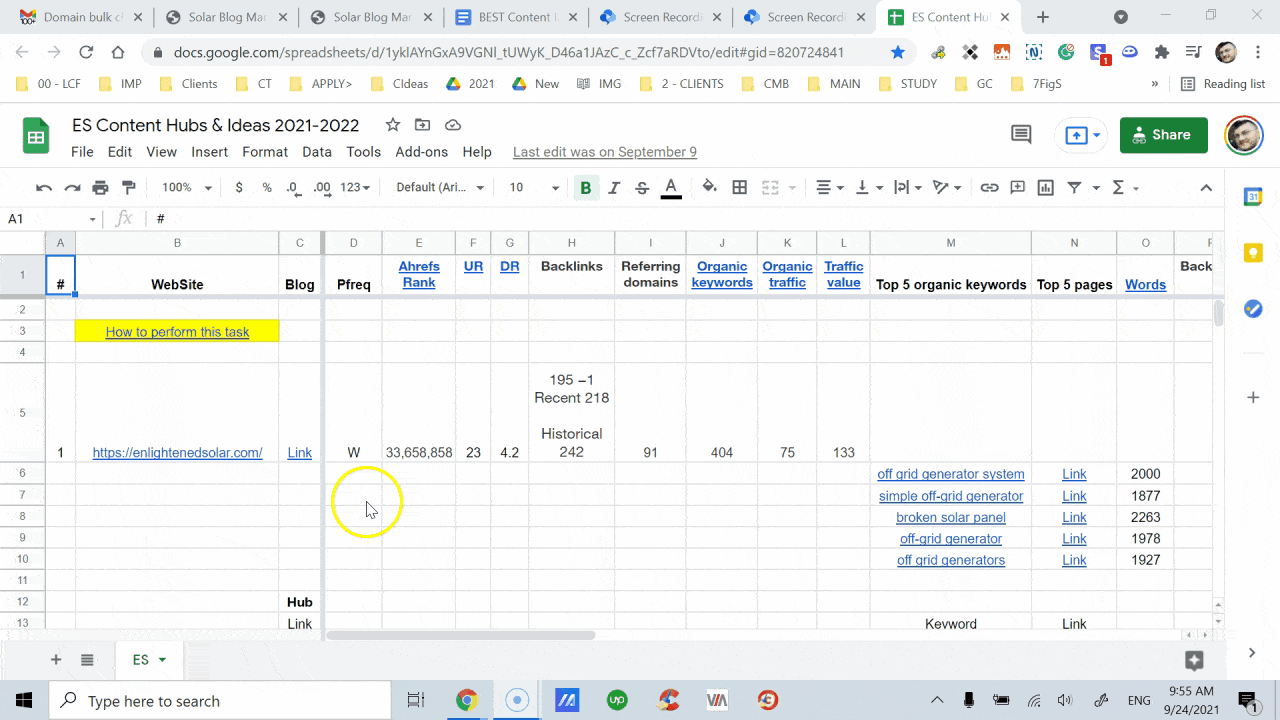
(2) Solar blog competition
Blogs are a great way to start conversations and convert leads. Blogs also increase your brand’s online visibility and credibility.
According to FocusVision, the average buyer reads 13 blogs before making a purchase. The Conductor reports that 131% of buyers are more likely to purchase a business with a blog.
Blogs are an affordable, efficient way of increasing long-term organic traffic. Companies that invest in blogs get a 13% ROI in their marketing strategy.
Don't believe me; take a look at these real-life examples.
> [Real-life Solar Blogs Case Studies]
Solar digital marketing is leveraging the power of green blogs to increase traffic and leads.
Let's look at actual solar installation companies and how blogs are helping them.
1. SunPower
Thanks to its blog, SunPower solar is a well-known solar installation company in California with a massive digital footprint.
Take a look at SunPower’s ranking metrics on Ahrefs (my preferred keyword research tool, and top preferred amongst solar companies and solar installers).
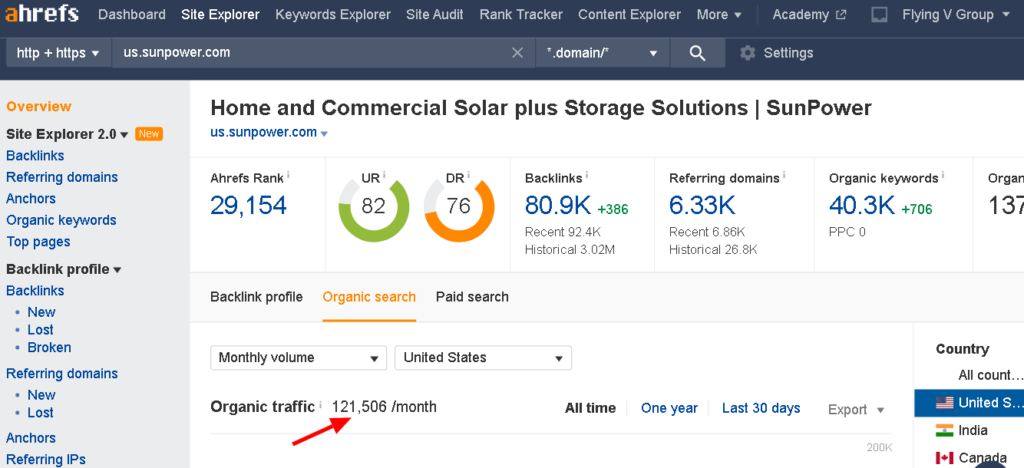
Source: Ahrefs
Organic traffic - 121,506 monthly organic American visitors
PPC traffic value - 776,000 USD
Organic keywords - 40,300
Here's another solar blog example.
2. Unbound Solar
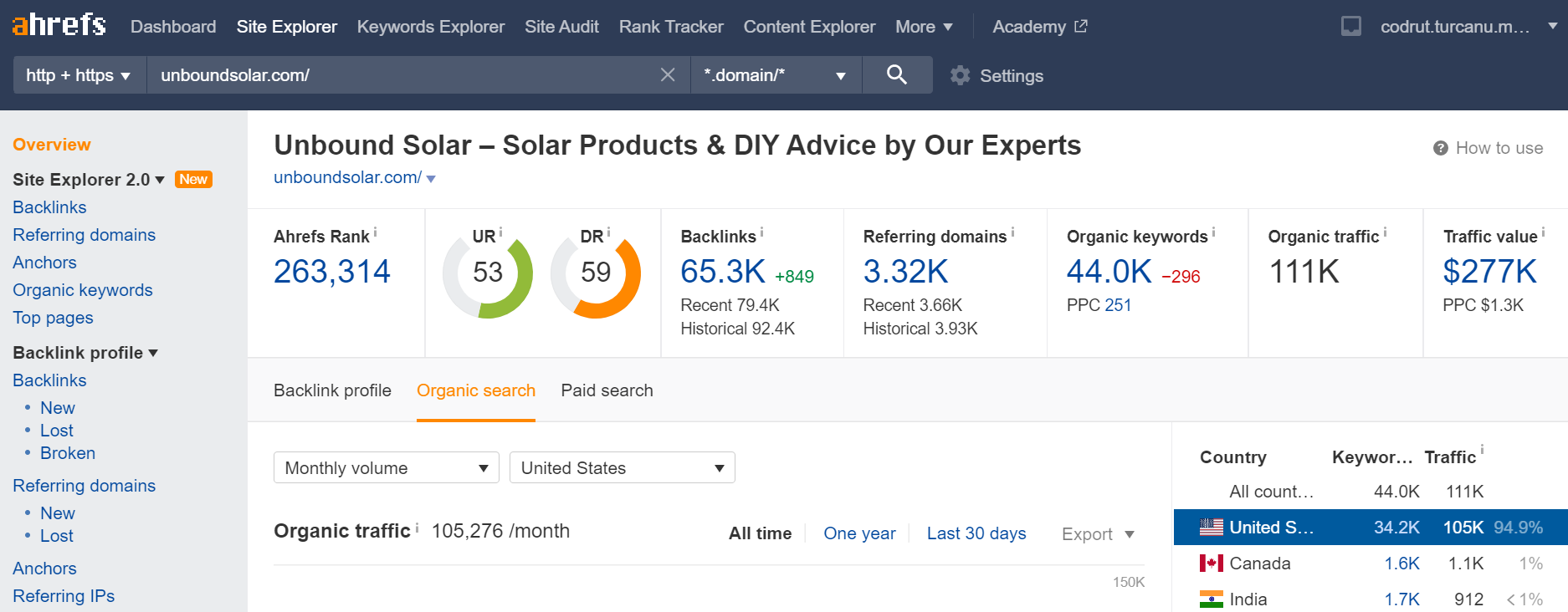
Source: Ahrefs
Organic traffic - 105,276 monthly organic American visitors
PPC traffic value - 277,000 USD
Organic keywords - 44,000
3. Semper Solaris
This is a premier solar panel installation company in California that is slaying it online.
The Semper Solaris website boasts of a resource page full of high-quality, expertly written blog posts that grab the reader’s attention from the get-go.
Here is a quick SEO analysis of this solar website.
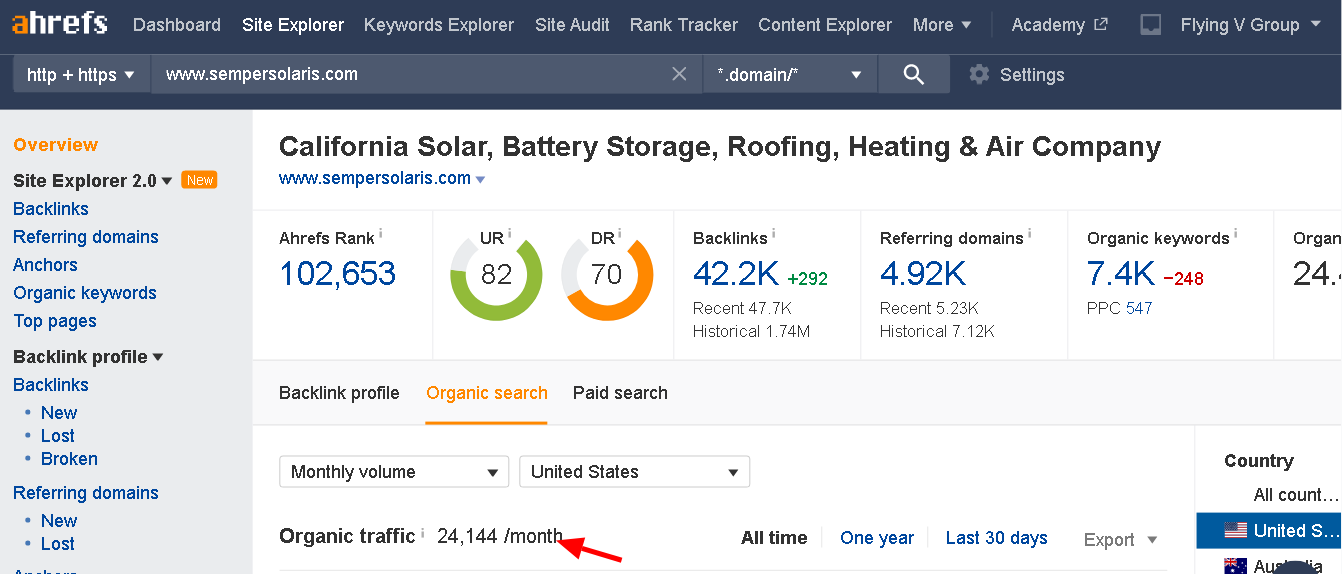
Source: Ahrefs
Organic traffic - 24,144 unique visitors per month
PPC traffic value - 104,000 USD
Organic keywords - 7,400
That's the reason why companies such as
EnlightenedSolar.com hire us to write
weekly long-form blog posts (2,000+ words each)...
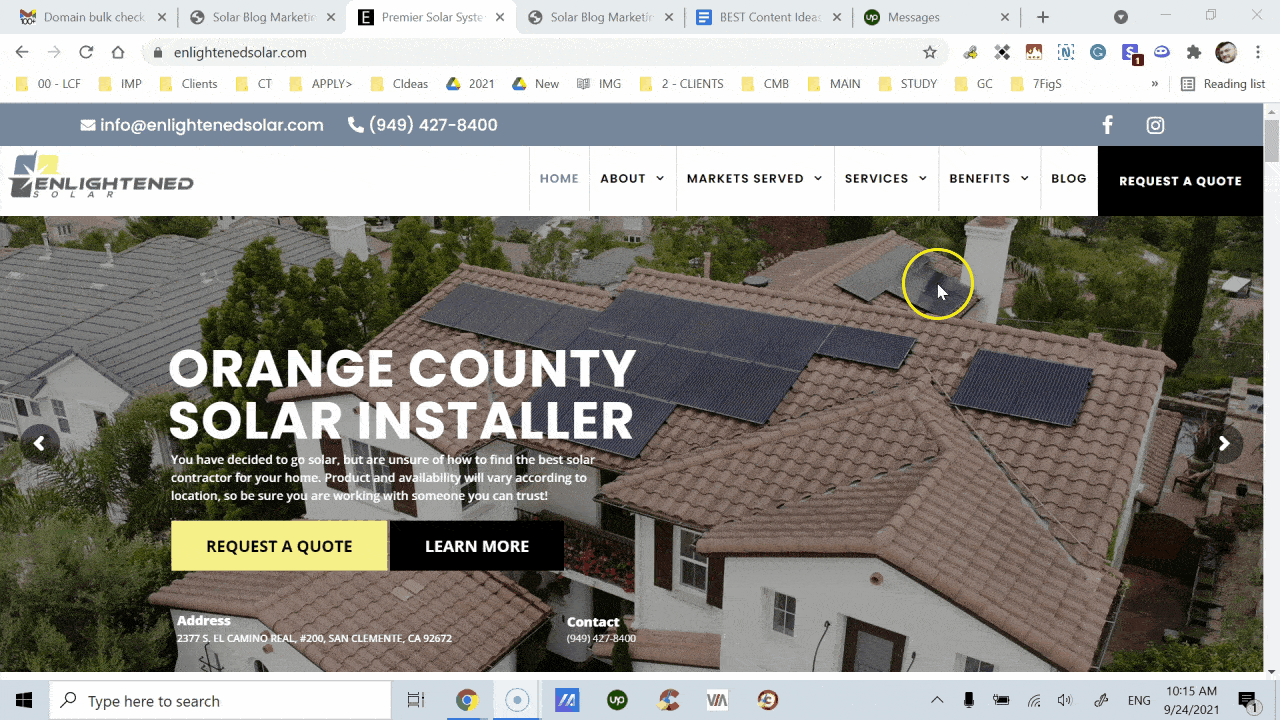
(3) Top three mistakes to avoid
with your solar content
Blogs need the right keywords and meta descriptions, among other SEO hacks (best practices), to grab the attention of Google and your potential clients.
Fresh, expertly written, and informative blogs will skyrocket your earnings and set you as an industry authority.
Here are the three top blog killer mistakes that you should avoid at all costs.
Top Mistake #1 - Posting only a few blog posts
The blogging frequency is a topic that few solar installation company owners understand but is very important for SEO.
Here are some top solar blogs in the US publishing blog post content once a week or more often:
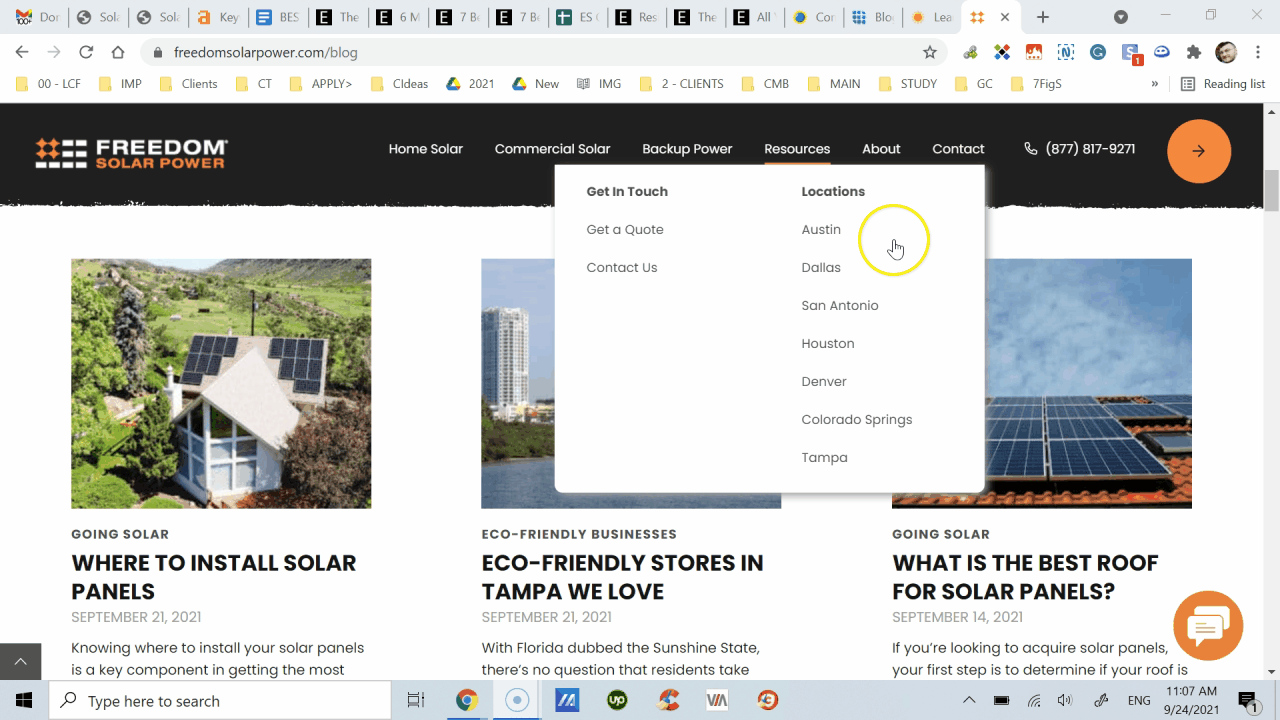
What is the right blogging frequency?
According to a HubSpot survey, publishing 2-4 weekly or 11 monthly blogs is a good start for small companies.
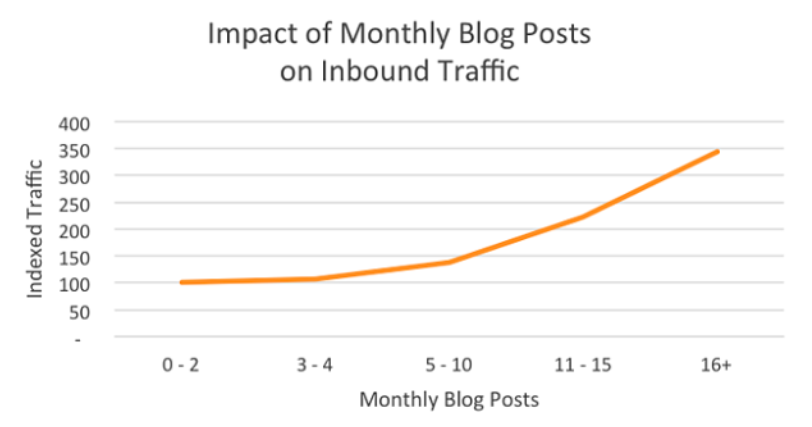
Blog post frequency vs Inbound traffic
Bigger companies can consider publishing blog content daily or 4-5 blogs weekly.
Blogs help search engine bots crawl, understand and rank sites. Fresh content is critical to enjoying Google benefits through the QDF (Query Deserves Freshness) ranking metric.
Do you already have content on your blog, but not ranking well? Old is gold. Updating old blog content is an essential strategy in compounding a site’s organic traffic quickly and cost-effectively.
Top Mistake #2 - Failing to write high-quality,
lead-converting blogs
With the Panda Google algorithm update of 2011, content quality has never been this important. Out of the over 200 metrics that Google considers when ranking pages, quality is at the top.
High-quality content means well-written, optimized, and original user-focused content that answers users’ queries and provides solutions to their pain points.
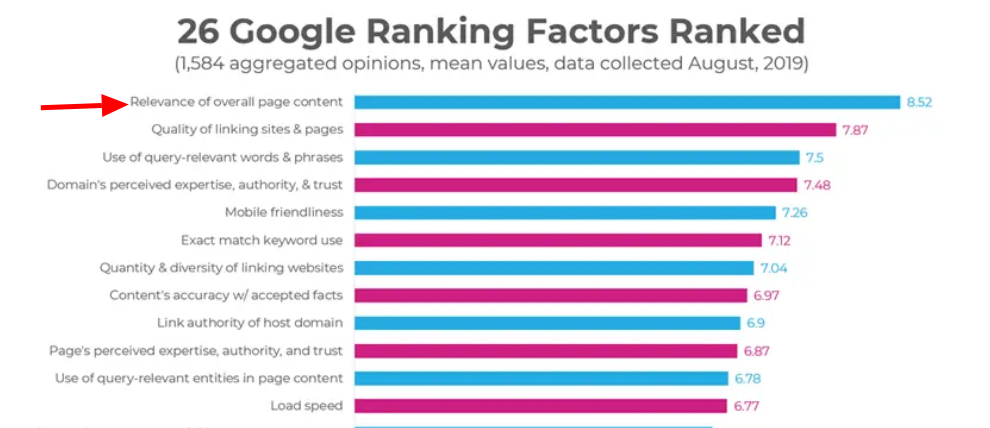
Source: contentpowered.com
Here are the top reasons why your solar blog should have excellent content:
- Backlinks. High-quality content will attract backlinks from reputable sites. This, in turn, will improve the credibility and trust of your blog.
- Improve the user experience. Every visitor to your blog is looking for something—a solution to a nagging problem, answers to their most pressing questions, product comparisons, etc.
- An updated blog will keep visitors longer on your page, improving engagement metrics which is excellent for Google Ads consideration.
A top-ranking blog with all the answers, backlinks, images, and keywords is your best bet to attract and satisfy the users’ needs. We use a detailed content brief so our writers know exactly how to handle solar content research, writing & editing, thus ranking solar blogs and scaling their marketing.
Top Mistake #3 - Creating Content
that Isn’t User-centric
The average online user spends mere seconds before bouncing off an unhelpful page. Your blog content goal is to have more visitors spend more time on your website, going through multiple pages; this will increase bounce rate and average time spent on site, which helps with overall SEO and rankings.
This means your content has to grab the user’s attention within the first 3 seconds of landing on your page.
Blogs that are straightforward and optimized to improve the user’s experience score big in this respect.
To write for the user and provide maximum value,
your solar content should be:
- Clear and straightforward.
- Well organized with clearly defined points.
- Simple and easy to understand.
- Informative, appropriate, and engage the reader.
(4) WHO You Should Hire for your
solar blog content needs and WHY
Consider using experts with relevant, real-time industry knowledge to get the most out of your blog content.
We are experts in the solar content marketing niche, having previously written extensively for top-tier solar companies in the US like Enlightened Solar.
We are masters of SEO and understand how to satisfy all the metrics to create explosive, high converting blogs that will increase eyeballs to your site.
We don't just craft copy; we craft copy with a compelling title and weave beautiful blog bodies that answer all of our reader’s pain points and provide terrific value.
>> Here is our step-by-step
solar content creation process in short:
- Create compelling, specific, and keyword-optimized titles.
- Craft persuasive, specific intros that exhaustively address the client’s needs within the first 150 words.
- Use of relevant, high-quality images with proper alt-image descriptions.
- Blog body packed with relevant, updated data and statistics from high-ranking authoritative industry experts.
- Links to high authority trusted sites with solid solar digital marketing experience.
(5) What to Look for When Hiring
External Content Writers to Craft Premium Blog Posts
At Affordable Rates for Your Solar Company
Whether your company has or doesn't have an in-house digital marketing team outsourcing your content marketing needs is a good idea.
Few freelance writers are experts in the solar industry, but fortunately for you, we are masters in the solar energy niche.
Our solar energy freelance writers are less expensive, more objective, free up your time, and are experts in solar energy copywriting.
>>> Consider these 3 factors
when choosing a solar freelance writer:
#1 - Industry expertise
That's non-negotiable. Solar energy marketing aims to convince an educated buyer to buy a solar system with high initial setup costs.
Engaging a bungling writer without the technical and regulatory know-how of the solar industry will be detrimental to your content creation campaign.
#2 - Direct response copywriting experience
Content is king is a term often used in the freelancing world but is there any truth to this claim?
Ever since Bill Gates coined this term in 1996, content continues to drive the internet. As a result, content in all its forms, including written text, images, and videos, is your best bet to attract leads to your site.
This is why you need a writer with direct response copywriting experience in the solar digital content creation space.
Such a writer will integrate all the forms of content and use them to build a solid solar energy marketing campaign for your company.
#3 - Rock-solid solar energy blog posts portfolio
A portfolio is proof of a wordsmith's copywriting & content writing abilities. To get the best results, use a writer who has handled similar projects in the past.
We boast of an impressive rock-solid portfolio in the solar content marketing sphere. We are experts at what we do and strive to deliver perfection consistently. Take a look below:

(6) How long should your blog post be to outsmart and outrank competitors (minimum 2000 words)
Blog post length is a topic many marketers struggle with all the time.
Most experts agree that anything between 300 to 2000 words is a safe number.
200 words and below is thin content, and Google penalizes sites with such content.
According to CopyPress, 2416 words is the average length of high search blog content.
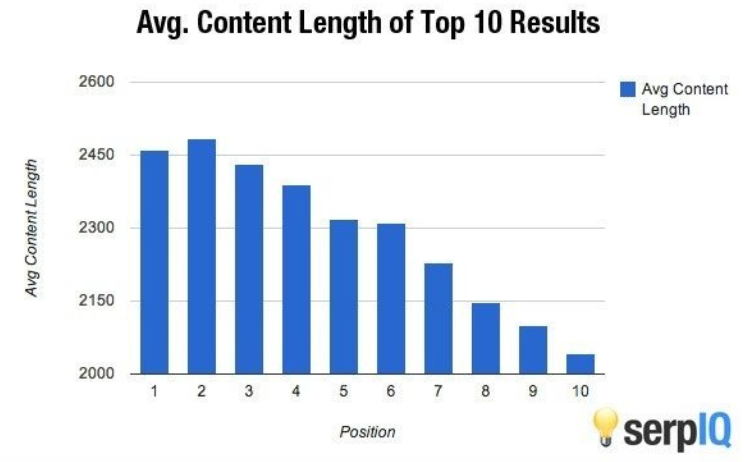
Source: serpIQ
An experiment by Marketing Experiments concluded that long-form content outperformed shorter content by 40.54%
All these stats prove one thing that longer content rocks.
How?
Google takes cues from content to understand and rank it. Longer, well-written and optimized content is more easily understood by Google, leading to a higher ranking.
Bounce rate is another crucial factor that search engines consider when ranking pages. How long users stay on your site demonstrates to Google the value of your content to the user.
What’s even more important
than the content length?
Content type; this requires you to research competitors’ content, see what type of blog posts they best rank for, and compare the metrics.
Although this is a time-consuming task, you will end up with a clear strategy and topics to cover for the next 12 months on your solar blog.
(7) How to craft titles
that stand out and win leads
A title is the first thing online users see about your blog article and can either welcome or turn them off.
A title is also a key page ranking metric that Google considers when displaying SERPs.
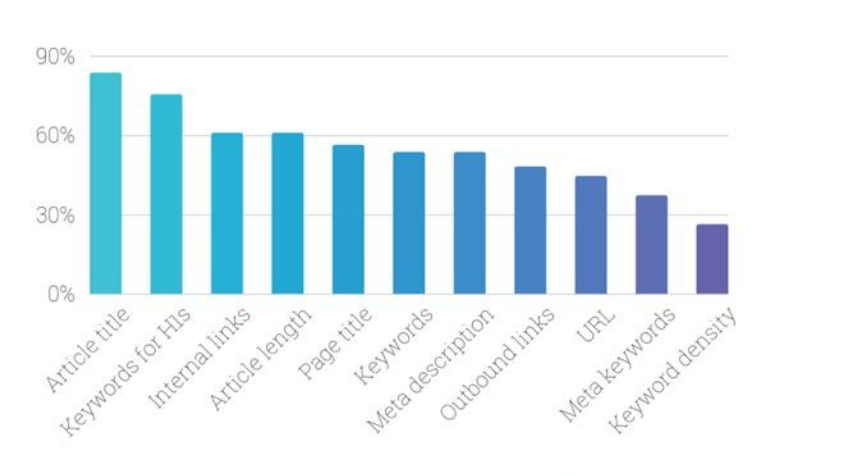
A title gives a sneak peek into your content and what it holds.
Here's a sneak peek into how we created client-relevant, attraction-grabbing titles for one of our clients:
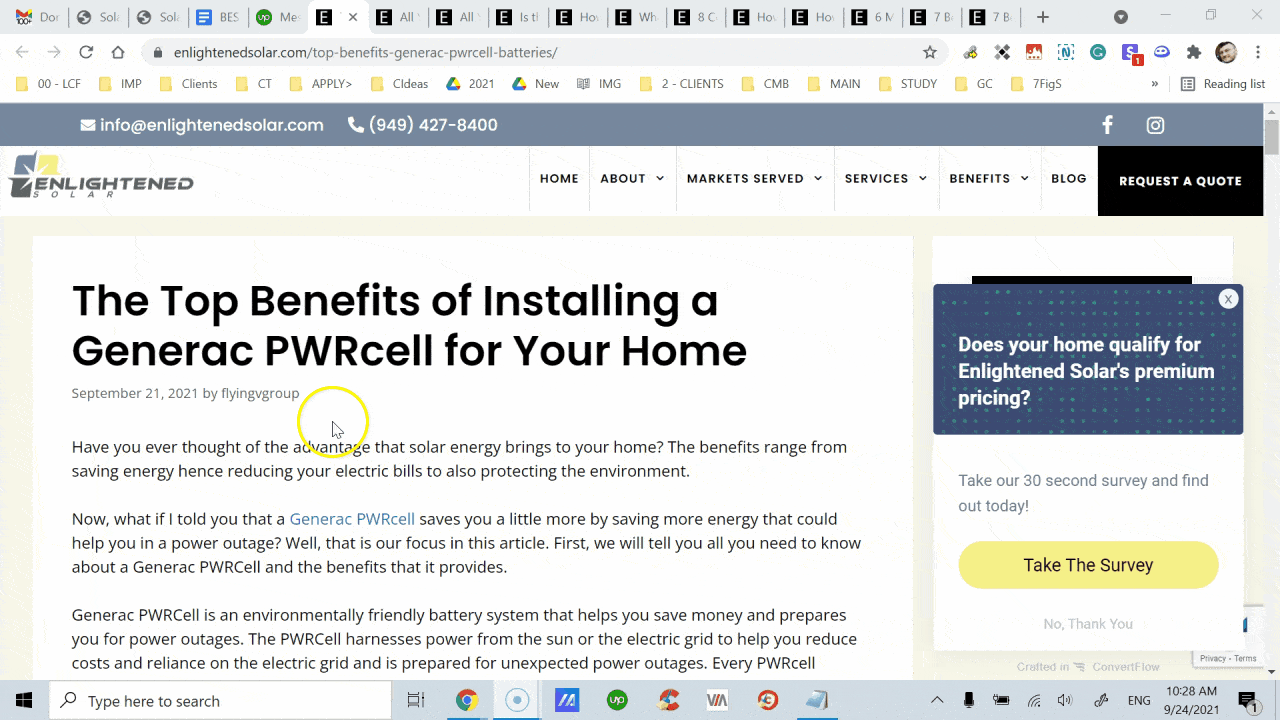
To craft a killer blog title that will woo your readers and Google, consider the following:
- Your target audience
The education level, occupation, and other demographics of your readers will determine your blog title. A more technical audience will be intrigued by different title headers than homeowners.
- Search intent
What is the motivation of your reader? Is it transactional, informational, or otherwise? For example, conducting an article with a “how to” title is excellent for an informative post, while a round-up product review is ideal for transactional intent.
- Main motivation
Is your audience motivated with the cheapest, lightest, or fastest product? Knowing the main pain point of your audience will help you craft killer solar energy marketing titles that will grab the reader's attention.
- Keywords
If you want your blog content to rank on search engines, you need to use high volume and low competition keywords. Conducting keyword research is crucial to crafting the most compelling, user-friendly, and relevant keyword.
(8) How to format your content
for maximum impact
(readership, shares, and leads)
The main point of having a blog is to increase your organic traffic, convert more leads and go viral.
If you wish to achieve all these goals in the shortest time possible, try these formatting hacks:
Write short, concise sentences and even shorter paragraphs with lots of white spaces.
Use plenty of visual cues like graphs, images, videos.
Apply simple, everyday English
Use bullets and lists
Apply paragraph headings (H1, H2, H3, H4, etc.)
Here is a blog post example which implements these blog post content formatting factors, and more - which we wrote for a retainer client:
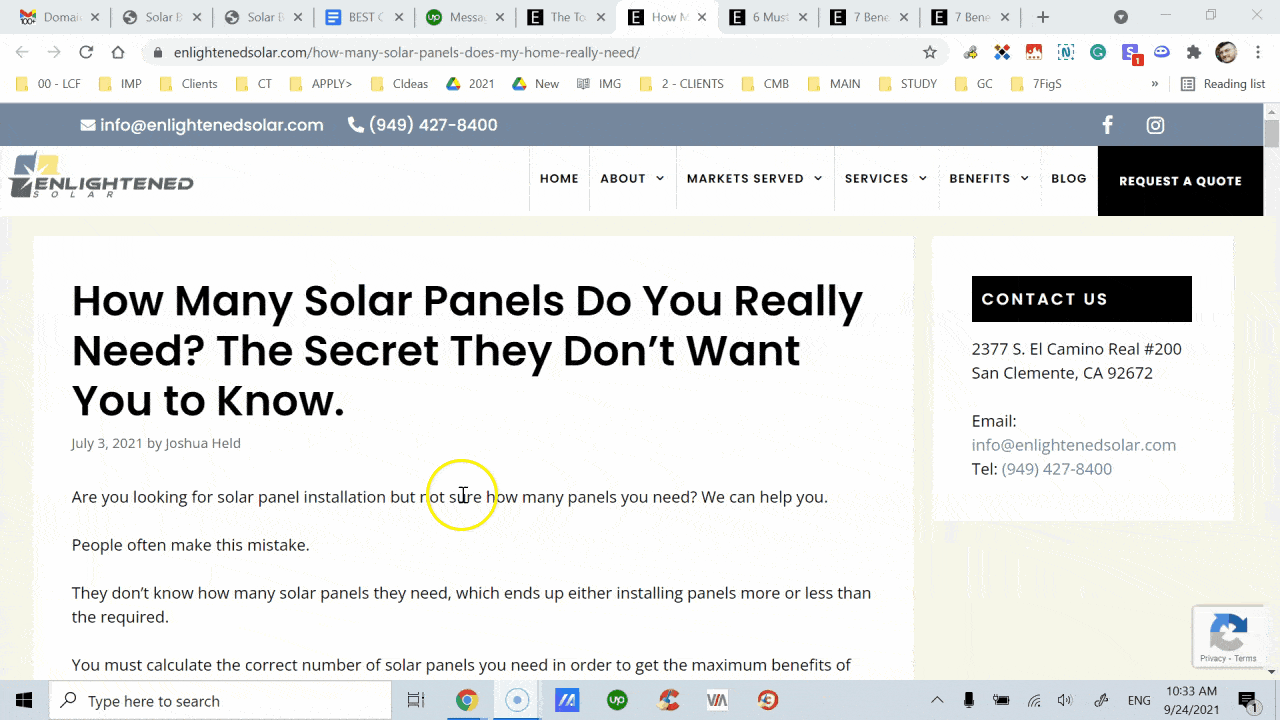
(9) How to take your blog content
to the next level and strategically
scale your marketing
Every month 13,000+ people around the world search for the term “solar company.” Only in the US alone, there are 8,900+ monthly queries on Google (as reported by Ahrefs)
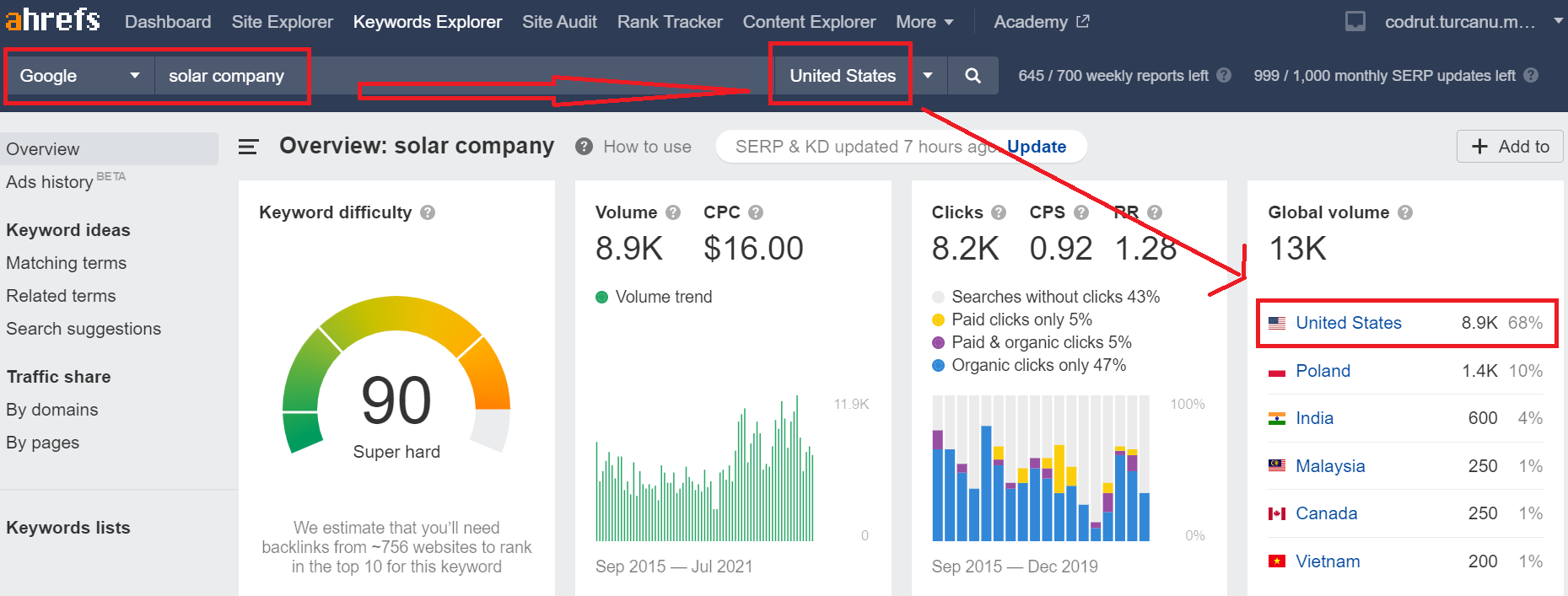
Ahref considers ranking for the term “solar company” as super hard, and it’s no wonder considering that every American state has more than 10,000 solar companies.
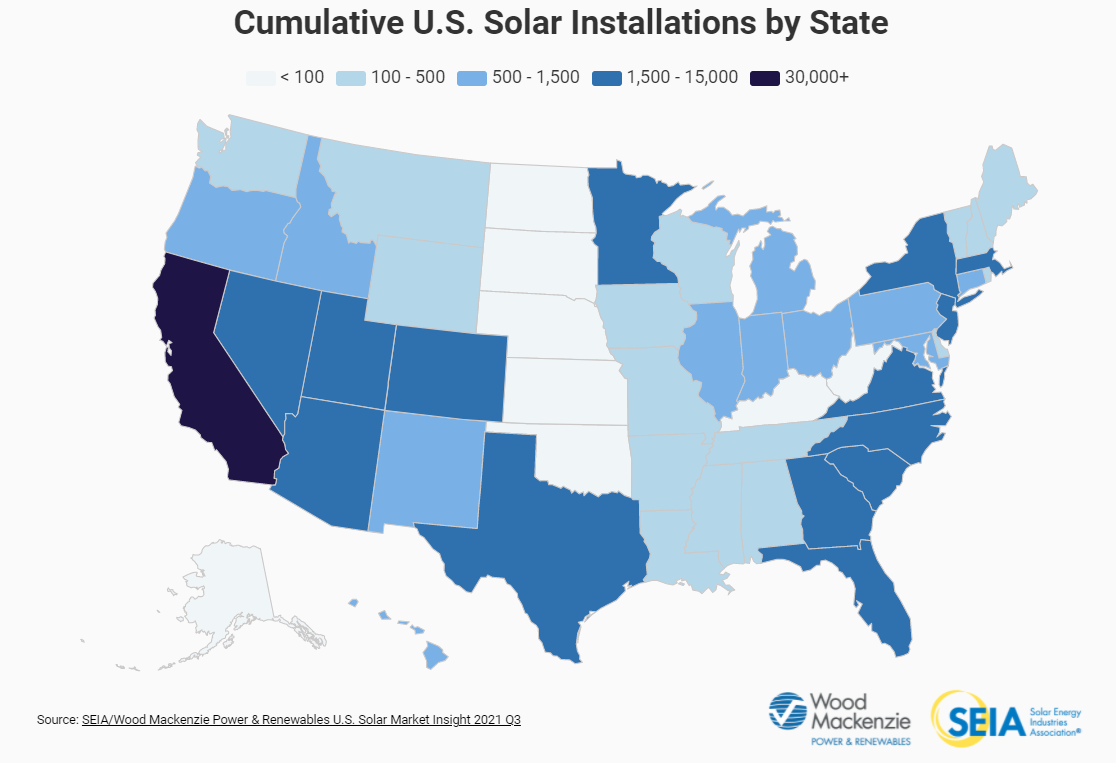
Source: Seia.org
To skyrocket your solar blog to the next level, you need a good SEO campaign, where blog content is the fundamental element. SEO refers to a series of best practices that allow content to rank highly on SERPs when applied correctly.
SEO has many requirements, including keyword research, image optimization, meta description, title optimization, and solid backlink building, among others.
SEO in a nutshell - Google Algorithm Ranking Factors (see graphic below)
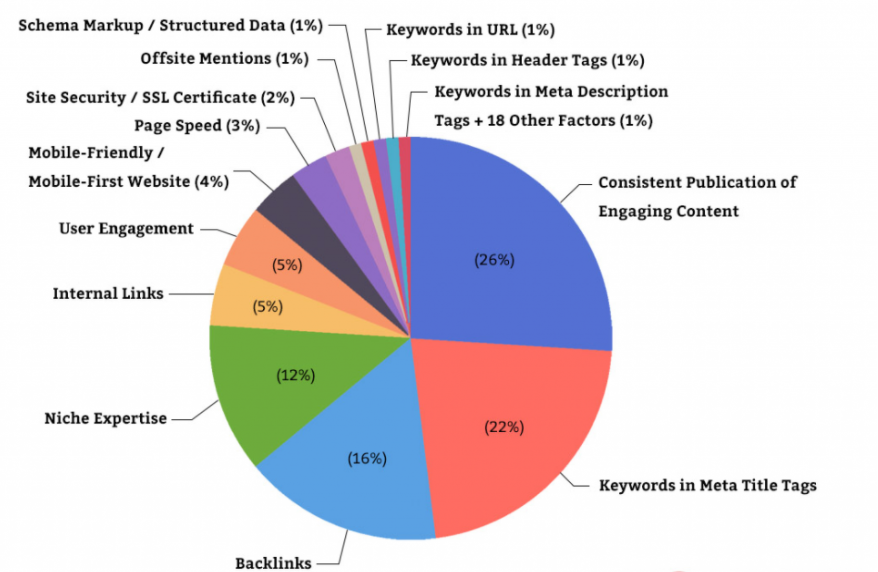
Source: First-page sage
SEO, though beneficial, is just one aspect of a great content creation strategy.
Using a team of external professional solar content creation writers is not an option for solar companies and solar installers looking to grow and scale their business.
External writers (like our team of solar writers) will populate your blog with high-quality, relevant blogs and allow you to rank on Google faster - and for the long-term.
To craft SEO solar blogs, you or your content team
should follow these "simple" steps:
To further improve your solar energy blog consider answering the 5Ws within your content
Leveraging a team of external professional solar content creation writers is a fantastic idea because it's a long term investment in your solar business and marketing.
Our expert solar writers will populate your blog with high-quality, relevant blogs quickly and allow you to rank on Google faster - and for the long term.
>>>> Key Takeaways
1: SEO refers to a series of best practices that allow content to rank highly on SERPs when applied correctly.
2: Blogs start conversations, convert leads, and increase a brand’s online visibility and credibility.
3: Blogs that are straightforward and optimized improve the user’s experience score.
4: A title gives a sneak peek into your content and what it holds.
5: Industry expertise, direct response copywriting experience, and rock-solid solar energy blog posts portfolio are the three factors to consider when choosing a solar freelance writer.
Ready to Scale Your Marketing, Blogs, And SEO Results? Let's Talk!
Outsource your content creation needs to our solar blog writers, and we'll do the rest.
Let’s get in touch and make the magic happen. We are the experts in solar blog writing, and we will skyrocket your organic traffic and improve your digital presence with high ranking, informative, and relevant blog posts.
